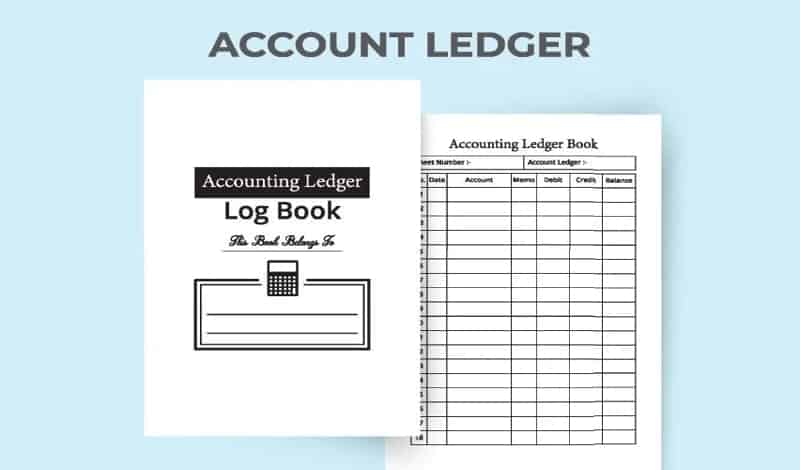Table of Contents
Classification Of Accounts (Financial Accounting)
What is The Ledger?
A ledger is a book in which a company’s financial activities are recorded as debits and credits. It is an accounting space where financial transactions for a company are recorded under various accounts.
A Pages of the ledger IS referred to as Folio while Folio numbers are used to identify each page. It is written in the page’s upper right corner and can be spotted there.

[the_ad id=”451″]
Classification of Accounts
Personal Accounts
These are the accounts where transactions with people or other businesses are documented. Examples include creditors and debtors. A unique example of this account is the capital account. The value of the owner’s investment in the company is tracked in this record.
Real Account
They are impersonal accounts that keep track of financial transactions involving properties or tangible assets. Accounts for assets and buildings, automobiles, and stock of products purchased for resale are a few examples. Because we can see and touch them, the objects are collectively referred to as tangible assets.
Nominal Account
They are accounts that simply exchange value in name. Since they don’t have a physical form, what they receive and offer cannot be seen.
These accounts include general expenses, rent and rates, interest payments and dividends received or paid, etc. They keep track of profits and losses. The essential principles of double entry still hold true notwithstanding these account categories. Debit accounts that receives and credit accounts give value.
[the_ad id=”453″]
Division Of Ledger
Small businesses can easily keep a single ledger where transactions are entered by a single clerk. Such a method can be problematic if the company is larger. Additionally, one clerk might not be able to efficiently handle all of the job.
Also, the book might grow too complex for information to be quickly found when needed. It is usually considered important to divide the ledger into different sections, each of which is focused with a certain sort of transaction, in order to eliminate these issues.
1. Sales Ledger:
As was previously mentioned, the debtors ledger is another term for the sales ledger and it has a separate account for each person to whom items have been sold or for whom services have been rendered on credit. The fact that it includes the personal accounts of the company’s debtors explains why it is termed the debtors ledger.
2. Purchase Ledger:
The personal account of those who provided items to the company on credit is contained in this ledger. As a result, it serves as a ledger for maintaining individual creditor accounts. The amount outstanding will show as a credit balance in the account up until payment has been paid to the creditor.
3. General ledger:
Real nominal accounting are kept in this ledger. All other accounts, excluding the cash account, bank account, and accounts for debtors and creditors, are often stored in the general ledger. The impersonal accounting for assets, liabilities, expenses, incomes, sales, purchases, and refunds will all be kept in this ledger.
4. Private Ledger
This is a private ledger that is held by the business owner or the accountant and is not accessible to the other employees. The kinds of accounts that should be kept in the private ledger depend on the needs of the specific company and the preferences of management.
This is a separate sheet with ledger ruling printing. Each single page is placed into an expanding binder, which is then locked by a designated individual.
Each ledger is assigned a unique number or letter, and the accounts are organized alphabetically within each ledger. This makes it simple to access a specific ledger account when needed.
Whenever a leaf is full, The binders can then be unlocked, the complete leaf extracted and filed in a different binder designated for full accounts after. The old leaf is then replaced with a new one.
Alternatively, new leaves can be put on top of the old ones. until the balances of the ledger account are moved into a new book at the end of the year. The benefit of this is that one book will have a continuous history of each account with regard to each year.
[the_ad id=”453″]
These are being utilized more frequently in place of bound ledger. Each printed card in a card ledger represents a client or supplier, as applicable. The cards are neatly sorted and kept in designated storage spaces. Each card is replaced with a fresh one as it fills up and is then moved to a cabinet reserved for the completed account.
The double entry rule still applies to credit and cash transactions recorded in a loose-leaf or card ledger. A credit entry will be made in the opposite account for every debit entry.
If this rule is diligently observed, the sum of the total debit entries and total credit entries in the various accounts will be exactly the same.
Benefits Of Card Ledgers And Loose-Leaf Ledgers
- Simple solution that doesn’t waste the space assigned to each account in the bound ledger.
- Periodic account balance extractions are simple and straightforward.
- Multiple clerks can simultaneously operate on a ledger.
Disadvantages Of Loose-Leaf And Card Ledgers
- Either intentionally or accidentally destroying the cards or loose leaves is common.
- To cover up fraud, fresh cards or leaves may be substituted for old ones.

